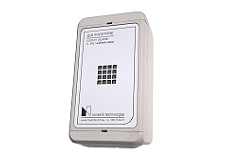Refrigerant Gas Detection
Refrigerant is commonly used for cooling and refrigeration. Traditional refrigerants are the CFC, HCFC, HFC and Ammonia. The CFC and HCFC refrigerants are phased out due to the ozone depletion potential and its effect on global warming. CFC and HCFC include refrigerant R12, R123, R501, R502. Nowadays we design systems only suitable for HFC refrigerants such as R134a and R410a. Also, gases such as Carbon Dioxide are used as refrigerant.
Do I Need a Detector?
Smaller domestic cooling installations are exempted from a refrigerant leak detector, its generally the larger (green star) installations which are fitted with fixed refrigerant leak detection.
Although the refrigerant has become more environmental friendly, the detection requirement remains. Refrigerant is expensive, could cause oxygen depletion, is toxic and harmful to health. Due to the implementation of VRF systems, the market for detection has increased. VRF stands for Variable refrigerant flow and is a system based on single outdoor condensing unit, and is circulated within the building to multiple fan-coil units. Often used in hotels, apartments, etc.
When a refrigerant leak has been detected, general the audible / visual alarms are activated. A good refrigeration system will perform a "pump-down" and recover the refrigerant in its storage vessel. At Green star applications, special recovery units are fitted to collect the refrigerant upon a gas leak. Please contact us for further information.
Specifications
- Refrigerant is toxic and hazardousx
- Tradition refrigerants are an Ozone depletion potential
- Reference Australian Standard AS1677
Documents and References
- AS 1677-1986: Refrigerating systems
- AS/NZS 3823.1.1:2012: Performance of electrical appliances - Airconditioners and heat pumps



